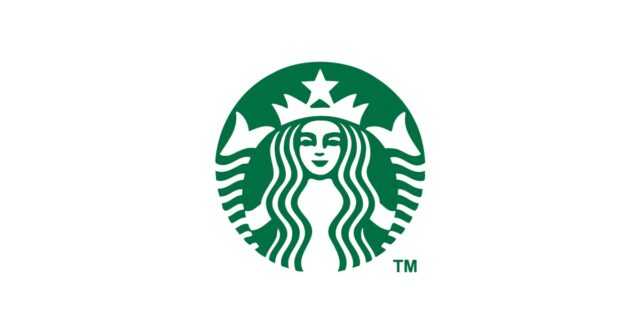MILAN – Starbucks Corp. on Thursday reported financial results for its 13-week fourth-quarter and 52-week fiscal year ended October 2, 2022 exceeding expectations. The Seattle-based company came out with quarterly earnings of $0.81 per share, beating the Zacks Consensus Estimate of $0.73 per share. This compares to earnings of $1 per share a year ago. These figures are adjusted for non-recurring items.
Starbucks notched higher global comparable sales in its fourth quarter despite a large decline in its Chinese growth market, which remained affected by Covid-related lockdown policies.
Revenue rose to a quarterly record $8.4 billion, compared with $8.15 billion in the prior-year quarter, beating expectations of $8.31 billion.
The company’s shares rose more than 3 per cent in after-market trading, as management confirmed its long-term guidance it issued in September.
Same-store sales rose 7% worldwide, helped largely by bigger ticket sizes, even as actual transaction volume remained muted. They were up 11% in the U.S. But international same-store sales fell 5%, with a 16% drop in China.
In the United States, same-store sales rose thanks to people spending more on average and a slight uptick in traffic. Cold beverages accounted for more than three-quarters of beverage sales at U.S. company-owned cafes.
The company’s operating margin fell to 14.2 per cent from 18.2 per cent, due to investments and higher labour costs.
“Despite elevated pricing actions taken throughout the year, daily store traffic in the U.S. reached approximately 95% pre-pandemic levels in September fueled by the wildly successful fall promotion,” Chief Financial Officer Rachel Ruggeri said on the company’s quarterly conference call.
“We saw accelerating demand for Starbucks coffee around the world in Q4 and throughout the year,” interim Chief Executive Howard Schultz said in a statement.
In September, the company announced it would invest $450mn to revamp its stores, with Schultz telling investors the company would, in the long term, deliver double-digit growth in revenue and profit. The company suspended its 2022 fiscal guidance in May after missing sales estimates.
Starbucks: Q4 Fiscal 2022 Highlights
- Global comparable store sales increased 7%, primarily driven by an 8% increase in average ticket
- North America and U.S. comparable store sales increased 11%, driven by a 10% increase in average ticket and a 1% increase in comparable transactions
- International comparable store sales decreased 5%, driven by a 5% decline in comparable transactions and a 1% decline in average ticket; China comparable store sales decreased 16%, driven by a 17% decline in comparable transactions, partially offset by a 1% increase in average ticket
- The company opened 763 net new stores in Q4, ending the period with 35,711 stores globally: 51% company-operated and 49% licensed
- At the end of Q4, stores in the U.S. and China comprised 61% of the company’s global portfolio, with 15,878 stores in the U.S. and 6,021 stores in China
- Consolidated net revenues up 3%, or 11% on a 13-week basis, to a record $8.4 billion, inclusive of a 3% unfavorable impact from foreign currency translation
- GAAP operating margin of 14.2% decreased 400 basis points from 18.2% in the prior year, primarily driven by investments and growth in labor including enhanced store partner wages as well as increased spend on new partner training, inflationary pressures, coupled with sales deleverage related to COVID-19 restrictions in China, partially offset by strategic pricing, primarily in North America and sales leverage across markets outside of China
- Non-GAAP operating margin of 15.1% decreased from 19.5% in the prior year, or 18.9% on a 13-week basis
- GAAP earnings per share of $0.76, down from $1.49 in the prior year
- Non-GAAP earnings per share of $0.81, down from $0.99 in the prior year, or $0.89 on a 13-week basis
- Starbucks Rewards loyalty program 90-day active members in the U.S. increased to 28.7 million, up 16% year-over-year
Full Year Fiscal 2022 Highlights
- Global comparable store sales increased 8%, driven by a 5% increase in average ticket and a 2% increase in comparable transactions
- North America comparable store sales increased 12%, driven by a 7% increase in average ticket and a 5% increase in comparable transactions; U.S. comparable store sales increased 12%, driven by an 8% increase in average ticket and a 4% increase in comparable transactions
- International comparable store sales decreased 9%, driven by a 5% decline in comparable transactions and a 4% decline in average ticket; China comparable store sales decreased 24%, driven by a 22% decline in comparable transactions and a 3% decline in average ticket
- Consolidated net revenues up 11%, or 13% on a 52-week basis, to a record $32.3 billion, inclusive of a 2% unfavorable impact from foreign currency translation
- GAAP operating margin of 14.3% decreased 250 basis points from 16.8% in the prior year, primarily driven by investments and growth in labor including enhanced store partner wages, inflationary pressures, as well as sales deleverage related to COVID-19 restrictions in China, partially offset by sales leverage across markets outside of China and strategic pricing, primarily in North America
- Non-GAAP operating margin of 15.1% decreased from 18.0% in the prior year, or 17.8% on a 52-week basis
- GAAP earnings per share of $2.83, down from $3.54 in the prior year
- Non-GAAP earnings per share of $2.96, down from $3.20 in the prior year, or $3.10 on a 52-week basis


















